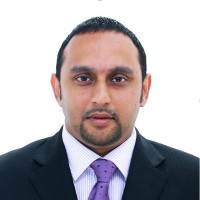Following are excerpts from H.R. Dipendra’s presentation for the 2016 Justice for Free Expression Conference discussing trends in freedom of expression in Malaysia and Singapore. Download the full pdf versions below.
MALAYSIA
2015 IN A NUTSHELL: 2015 has been inundated with a deluge of administrative clamp downs to the constitutional right of freedom of expression in Malaysia. Innocuous solecism and mordant comic strips were the subject of criminal prosecution. A number of activists, lawyers, editors, and students were arrested, remanded and/or prosecuted for expressing their opinions over Twitter, articles, and through cartoons. The Home Minister had issued a total of 28 Printing Presses and Publications (Control of Undesirable Publications) Orders in the same year banning the circulation of a total of 47 books, amongst others, 3 books by the cartoonist, Zunar as well as “Any yellow coloured clothing and which contains the words ‘Bersih 4’” and “Any other printed material and pamphlets which leads to Bersih 4 Rally”. Suspension orders were issued to two publications under the wing of The Edge Media Group. On an unprecedented move, the Inspector General of Police (IGP) of Malaysia took on the role of active policing and monitoring over social media platform, in particular, on Twitter. As aptly put by Human Rights Watch’s Asia deputy director, Phil Robertson, the IGP “patrols the Twittersphere like a shark in open water”.
On the whole, year 2015 has not only been a tough year for the Fourth Estate of the country but it has also thrown woebegone and hermetic gossamer over the freedom of expression in Malaysia.
The Past: The cases which touch on the right of freedom of expression revolve around offences under two pieces of legislation in particular – the Sedition Act 19481 and Printing Presses and Publications Act 1984 (‘PPPA’). The following are summary of a few important court decisions stretching from October 2014 to early 2016.
The Ongoing Cases to Watch Out in 2016: International Commission of Jurists (ICJ) has reported a total of 37+1 cases investigated under the Sedition Act 1948 in year 2015. Amongst the individual investigated are Mr. Ho Kay Tat, publisher and CEO of The Edge Media (media group) and Mr. Jahabar Sadiq, the CEO of The Malaysian Insider (online news portal). Following the arrest of numerous individuals, the upcoming months of year 2016 anticipate landmark decisions on few ongoing cases.
Despite the call by various NGOs, local and international, for the abolishment of the Sedition Act which is perceived as a relic from the pre- Independence days, the courts seem reluctant to give a narrow interpretation and hence the application of the soi-disant obsolete Sedition Act. Au contraire, following the Federal Court’s decision in Azmi Shahrom’s case which had set a stare decisis that the Sedition Act does not contravene Article 10 (2) of the Federal Constitution, it will be an uphill battle for the lawyers to convince the courts otherwise.
Whilst the courts are stringent in their approach re the Sedition Act, the judicial environment seems to exude healthier breadth in dealing with the PPPA with the landmark case of Sepakat and subsequently The Edge’s case. However, the High Court in the latest BERSIH’s case has departed from the earlier judicial sentiment and are reluctant to interfere with the administrative decision of the Home Minister. Consequently, the outcome of the appeal of this case would be the determining factor in setting the legal dimension in upholding freedom of expression in Malaysia as far as the PPPA is concerned.
SINGAPORE
Key issues discussed:
1. What were the most important courts decisions on FoE in 2015 in your country/region in terms of their legal reasoning, legal outcome, and/or precedent setting?
2. How would you describe the overall judicial environment as far as the protection of FoE is concerned?
3. What should we watch out for in 2016? What are the key cases on the agenda?
4. Over time (1 to 3 years) and across judgments, are there general themes emerging, for instance with regard to: nature of the charges, legal reasoning, outcomes, other?
5. Over time, can you determine whether FoE jurisprudence (overall or on specific themes) is showing a gradual or sudden change, moving in a certain direction?
6. Would you argue that there are global common norms on freedom of expression? If so, which norms are evident to you? (For this purpose, we are defining norms as per Sikkink’s definition: standard of appropriate behavior for actors with a given common identity, e.g. States.)

